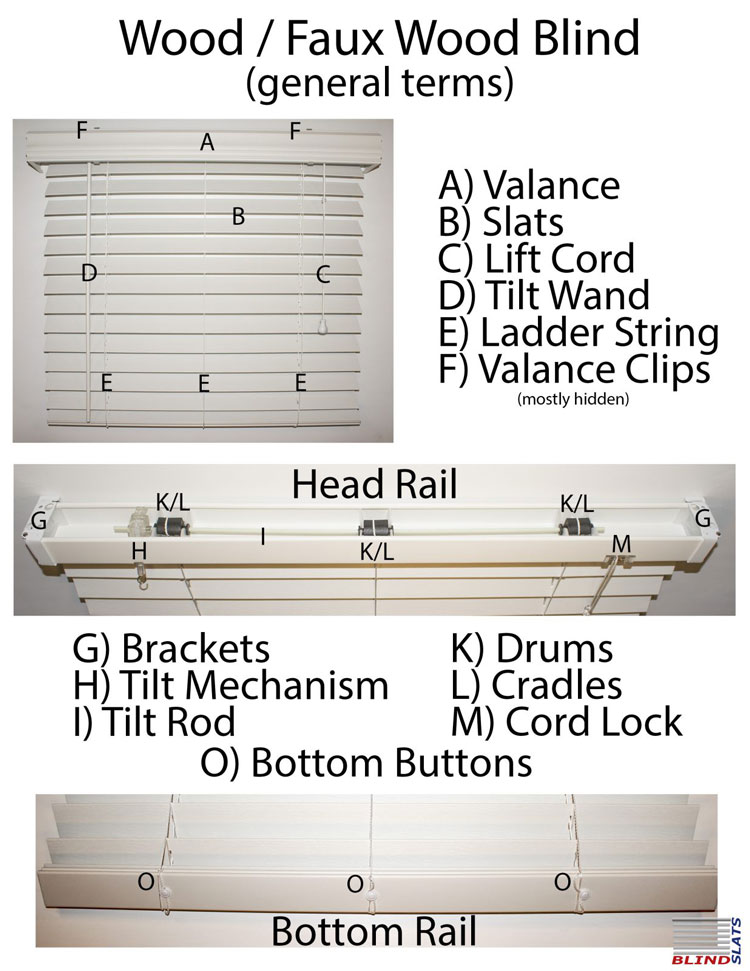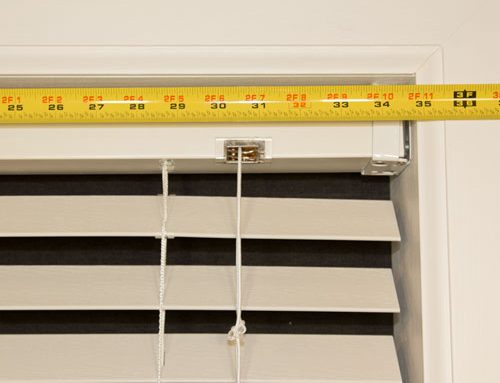Use the above blind diagram to identify window blind terminology
Seen in this blind diagram example is a 2″ faux wood blind with a valance, but the same parts and functionality are seen in wood, Venetian, and mini blinds. The names listed in this blind diagram, appear as they are commonly known, but can vary based on the manufacturer of the blind, and what part of the world it was made in. Even though horizontal blinds like this can vary greatly in materials used and specific functions, the same basic parts are usually incorporated.
The difference in materials is most notable in the slats. With horizontal blinds, wood, faux wood, or aluminum are the most common. The type of wood most commonly used is basswood because of its low cost, stability and its nice appearance when stained. Other woods used can be other hard woods like oak, ash and mahogany, but much less so due to their high cost.
The two main systems involved in blind function are:
- The lift system – which includes the cord lock, various plastic buttons or washers, and tassels to grab when lifting. This system works by pulling the pull strings, or cords, which go up through the cord lock. Cord locks have a latching system which utilizes the weight of the slats to operate it, catching the strings. The lift strings go down through holes in the headrail, through the slats, and then tie off at the bottom rail. Take a close look at the blind diagram, or a blind in your home to see observe the lift system functionality.
- The tilt system – the 2 main types are:
- Wand tilt mechanism – where a wand drives a tilter with an encased gear system which rotates the slats back and forth. The blind diagram shows a wand tilt.
- Cord tilt mechanism – where 2 pull strings operate a tilt mechanism, rotating the slats.
Minor differences in 2″ style blinds:
- Headrail size – there are 2 main sizes:
- High profile, which is 2″ high x 2 1/4″ deep, when facing the blind.
- Low profile, which is 1 1/2″ high x 2 1/4″ deep, also when facing the blind.
- You can see a good visual of the different headrail sizes HERE.
- Bottom rail shape, which are usually rectangle shade, or trapezoid.
- Bottom buttons – there are several styles, the 2 most common are:
- Plug button, where the lift string is tied off inside the bottom hole and the button plugs the hole. The blind diagram shows a plug button.
- Tie off button, where the button has a hole where the lift string goes through when tied off.
Valance styles on horizontal blinds:
Valances come in many shapes and sizes and are usually held on by plastic valance clips. The size (height) of a valance for 2″ blinds usually ranges from 2 1/2″ to 4″. Most valances bigger than 4″ would be considered a cornice and would require a different mounting system, as plastic mounting clips are often inadequate.
Please visit Blind-Slats Instructions page for more information.



